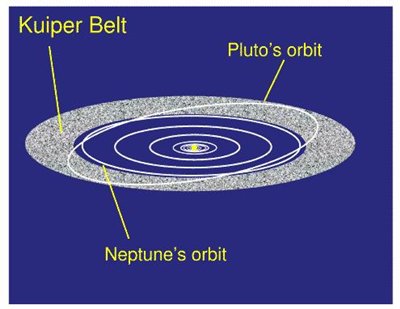 Pluto’s orbital period is long. It takes 248 years and its orbital characteristics are substantially different from every other planet in our Solar System; a year in Pluto is equivalent to 248 Earth years. As you already know, the planets orbit around the Sun on a flat reference plane which is called the ecliptic and each of those planets have nearly circular orbits. However, in Pluto’s case, its orbit is highly eccentric. This eccentricity in the way it orbits makes a small region of the dwarf planet orbit closer to the sun instead of Neptune’s. In fact, this isn’t an isolated case at all.
Pluto’s orbital period is long. It takes 248 years and its orbital characteristics are substantially different from every other planet in our Solar System; a year in Pluto is equivalent to 248 Earth years. As you already know, the planets orbit around the Sun on a flat reference plane which is called the ecliptic and each of those planets have nearly circular orbits. However, in Pluto’s case, its orbit is highly eccentric. This eccentricity in the way it orbits makes a small region of the dwarf planet orbit closer to the sun instead of Neptune’s. In fact, this isn’t an isolated case at all.
Despite its seeming regularity, this pattern actually suggests that in the long term, Pluto’s orbit is completely chaotic. There are computer simulations available that are often used to predict Pluto’s position for the next several million years, however, it is still quite impossible to really predict for sure where Pluto will end up because its position can become overly sensitive to various small details of the current state of our Solar System. Despite the fact that Pluto’s orbit often crosses with that of Neptune’s, their orbits are aligned in a way that they never collide nor get too close with each other.
There are various reasons for this and the simplest one would be the fact that their orbits simply do not intersect each other. Whenever Pluto is closest to the Sun, it also becomes the farthest above the ecliptic. This basically means that Pluto’s orbit passes at around 8 AU above that of Neptune therefore avoiding a major collision.
Change of Status – Pluto
